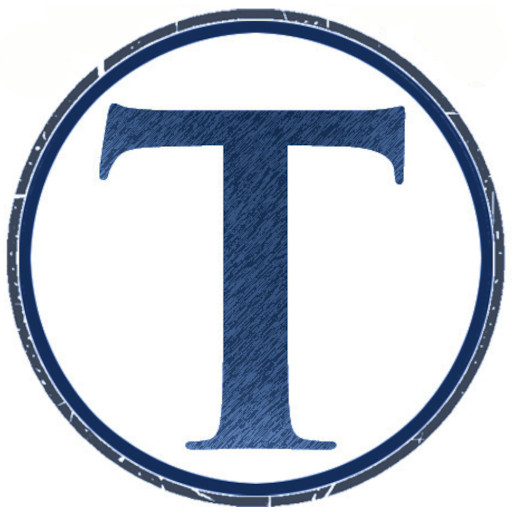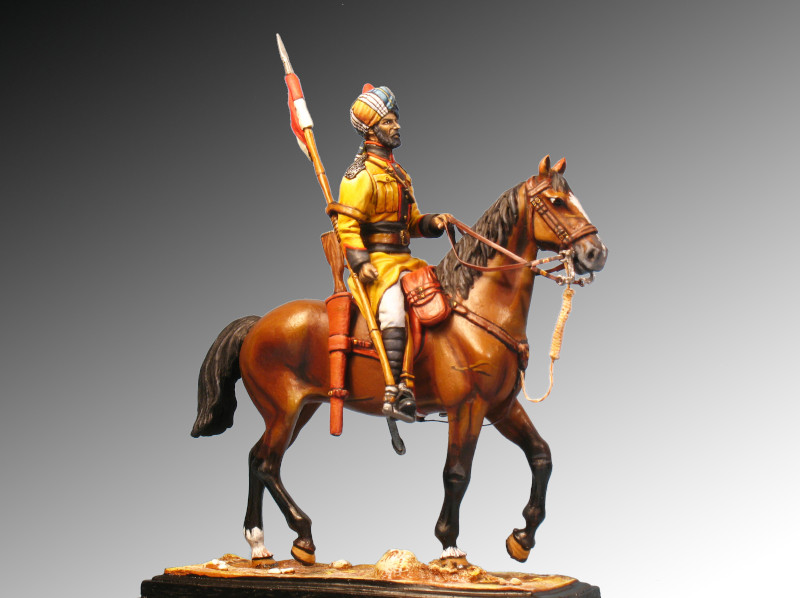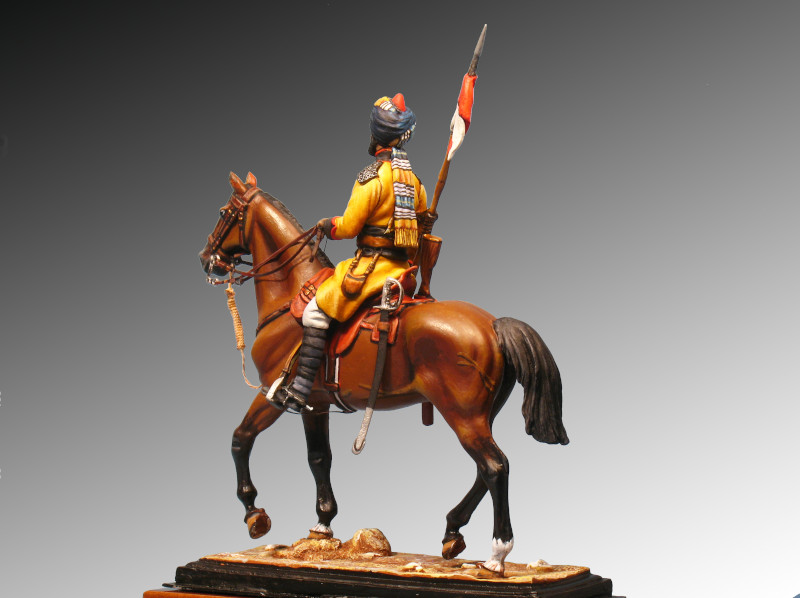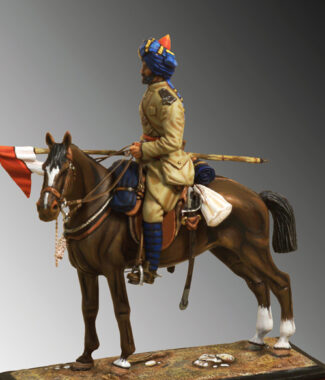You must be logged in to post a review.
€68.00
Figure to assemble and paint
Ref.: 5 – CT
Weight: 250 grs.
Material: Metal blanco
Number of Pieces: 18
Historical Review:
1st DUKE OF YORK’S OWN LANCERS (SKINNER’S HORSE) – 1909. Ref.: 14 – IA
Raised in 1803 as Captain Skinner’s Corps of Irregular Horse.
1823 – 1st (Skinner’s) Local Horse
1840 – 1st Bengal Irregular Cavalry (Skinner’s Horse)
1861 – 1st Regiment of Bengal Cavalry
1896 – 1st Regiment of Bengal Lancers
1899 – 1st (The Duke of York’s Own) Regiment of Bengal Lancers
1901 – 1st (Duke of York’s Own) Bengal Lancers (Skinner’s Horse)
1903 – 1st Duke of York’s Own Lancers (Skinner’s Horse).
After the reforms of 1921 it amalgamated with the 3rd Skinner’s Cavalry, becoming the Duke of York’s 1st/3rd Skinner’s Cavalry.
Following the independence of india in 1947, the regiment became part of the Indian Army Armored Corps, changing its name in 1950 to: 1st Horse (Skinner’s Cavalry)
Battle Honours: Bhurtpore, Kandahar 1942, Afghanistan 1879-80, Pekin 1900, France 1914, Afghanistan 1919.
Composition: (1901) Hindustani Muhammadans.
The creator of what is the oldest regiment of “Bengal Lancers” is Jame Skinner (1778-1841), son of a Scot in the service of the East India Company who had married the daughter of a Rajput landowner. After an apprenticeship in a printing house, this Metis joined the army of General Benoit de Boigne in 1795, a French adventurer in the service of Maharadja Scindhia, ruler of the Mahratta province. When this army was called upon to put itself at the disposal of the Napoleonic cause, on 28 August 1803, the British officers, including Skinner, deserted and joined the army of their compatriot General Lake, at the Aligarh fort.
Skinner then created, under the nickname of “Sikanda Sahib” (which is the name of Alexander the Great in Hindu), an irregular formation of about 900 cavalrymen taking the official name of Captain Skinner’s Horse but commonly called “Sikandar sahib’s Yellow Boys” because of the yellow colour chosen for the uniform in replacement of the green of Scindhia’s army. In 1826, Jamews Skinner was confirmed as a lieutenant colonel, with a command equivalent to that of a Brigadier General and was made a Companion in the Order of the Bath.
From its foundation, the 1st Lancers adopted a yellow uniform (unique in the British Empire). This “yellow” was actually a shade of mustard. The turban and kummerband were red until 1897, when they were changed to black. The native officers’ parade uniform featured the kurta adorned with three rows of gilt loops on the chest, his kummerband has gold embroired Kashmir end.
The British officers’ parade uniform was that of lancers, with a yellow coat and black plastron. Black trousers with yellow side stripes until 1903, when they were changed to gold. This uniform remained in service until 1914.
After the 1903 reforms, the native uniform included top pockets on the kurta. The kummerband was changed to black. The turban, which had been black with red and yellow stripes for troops and gold stripes for officers, was changed. It became dark blue with light blue, black and yellow/gold stripes outlined in white. White trousers with black putees, brown belts and boots, the horse equipment being the standard of the British cavalry. The Lee-Enfield carbine had replaced the previous model, the Lee-Metford carbine, in 1896.






Reviews
There are no reviews yet.